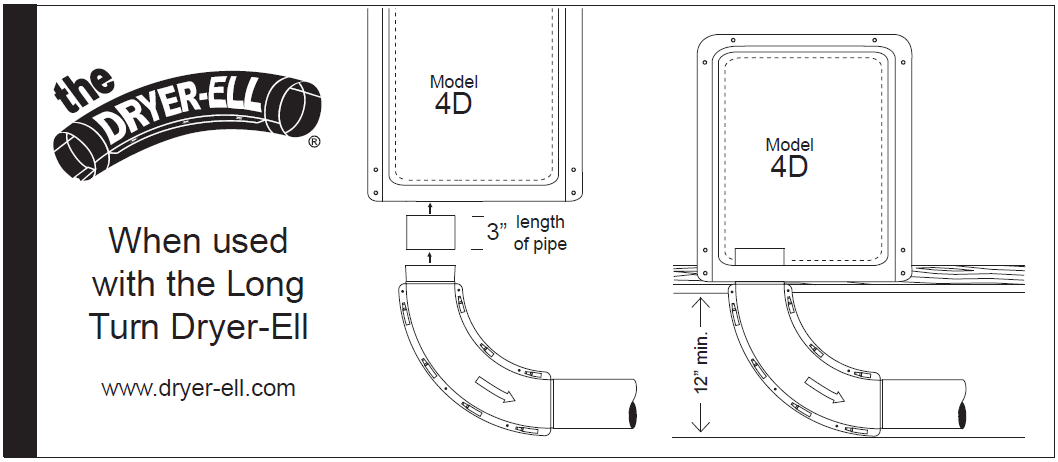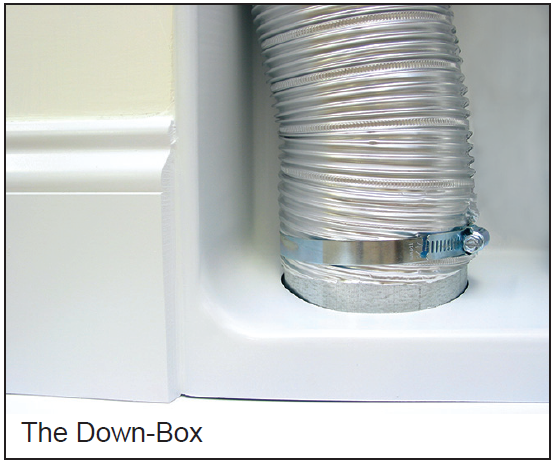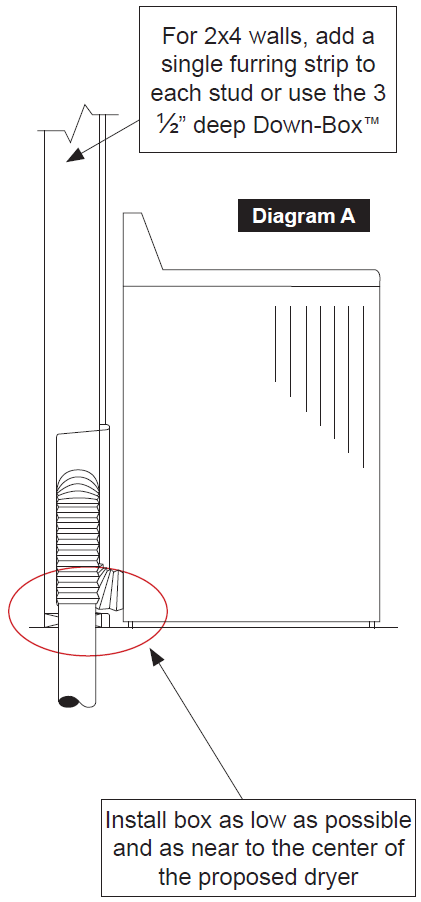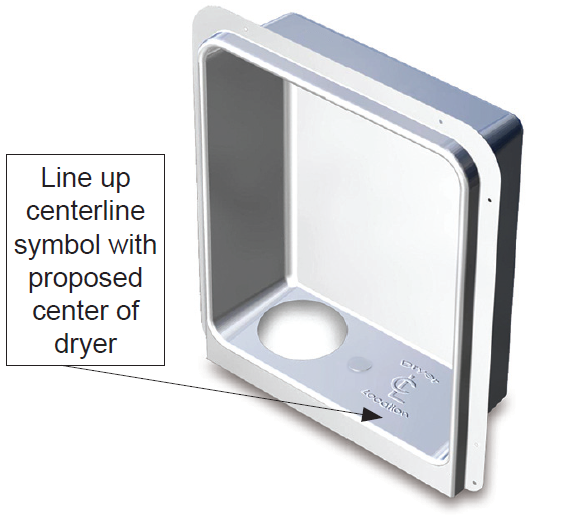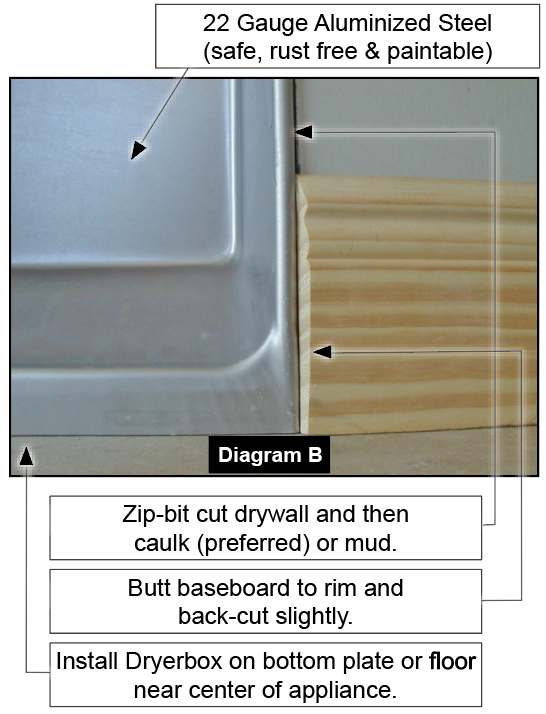
Model 4D is designed for downward venting exhaust systems and floor standing dryers.

Installation Instructions
- All standard American clothes dryers have an exhaust port in the center of the
rear panel at the very bottom. Therefore, it is best to install Dryerbox® as low as
possible so that the bottom tab is at or slightly below the finished floor level (not
applicable if stackable unit or on a pedestal (Diagram A). The centerline mark
on the Dryerbox® should be located as close to the proposed appliance center as
possible. - This model is for downward exhaust direction. If you are venting up, out or to the
side use our original Dryerbox® Model 425 or 350. - When installing the 4 ¼” deep Down-Box™ (Model 4D) into a 2x4 wall, fir out the
respective wall ¾” with a 1x2 furring strip to provide adequate depth or use the
3 ½” Model 3D. - When installing in an exterior frame wall, you should add insulation or duct board
to the back-side of box to minimize condensation and temperature transfer. - To achieve a fire resistance rating (one-hour F & T) min. 2X6 wood or metal framing
is required. The Dryerbox unit must be installed in accordance with the UL Cabinet
System listing. An extra layer of type-X drywall must be installed in the ID of the stud
cavity in which the Dryerbox is located. Drywall must be attached to nailers (minimum
1” X 2”) located on the inside of the cavity wall studs. Secure nailers to wall framing
at max 18 in. OC. The screws used to attach the inner layer of drywall shall be
spaced a maximum of 18 inches apart. For metal studs, mineral wool (min density 4
pcf) must fill the entire Dryerbox wall cavity and minimum R13 Fiberglass insulation
in adjacent cells. For wood studs, mineral wool or R19 Fiberglass insulation must fill
the Dryerbox cavity. Visit www.dryerbox.com/firestop for more detail. - Although not required, wrap the black iron gas line with vinyl tape where it penetrates
or use a termination plate on the adaptor fitting of a gas line if applicable. - Insert the 4” snaplock pipe about 2” through bottom port for the homeowner
to connect the flex transition hose at a later time (Diagram A). Secure with silver
tape, foam or caulk. - Use a Roto-zip-bit router tool to cut the drywall leaving a caulk joint for the painter
(Diagram B). It is best to caulk or mud this void (required for One-Hour Rating). - The baseboard is best terminated with a tapered back-cut into the rim extension
on either side of box (Diagram B). - Exposed metal can be left unpainted or can be sprayed with an acrylic latex or
oil-based (alkyd) paint when the rest of the wall, trim or baseboard is painted.
